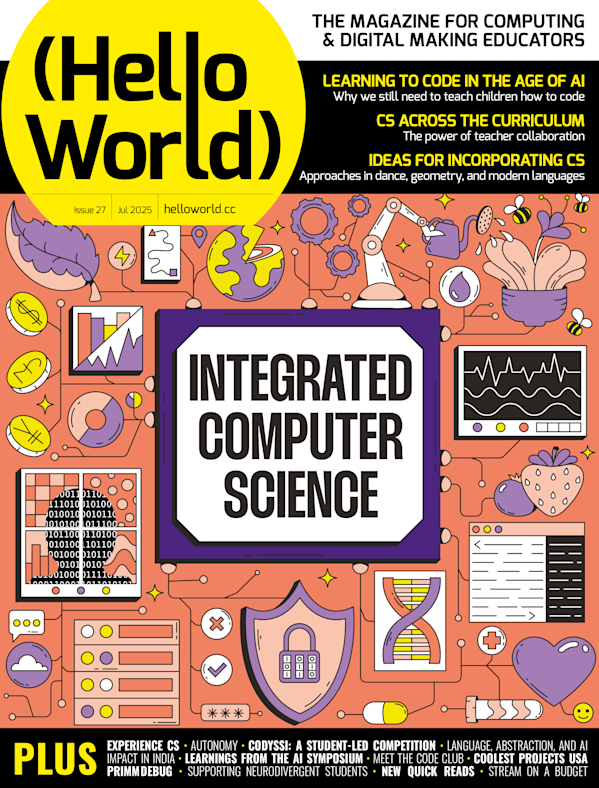
Issue 27 Integrated computer science
While in some countries, such as England, computing is taught as a standalone subject, in others, like the USA, it is integrated across the school curriculum. The argument for making computing and computer science (CS) standalone has been to offer better-quality education. But as digital technology increasingly shapes our world, it may be that thoughtfully integrating computing concepts throughout the curriculum is the most effective way to empower all young people to become confident and critical technology users.
In this issue, you’ll hear from educators who are integrating CS across a variety of subjects at the primary, elementary, and high-school levels.
James Abela shares how to teach coding across the curriculum using the concepts of sequence, selection, and repetition. Meanwhile, Jane Waite discusses whether we can effectively teach two things at once in her research-focused article on the Autonomy framework. And Jake Baskin, Executive Director of the Computer Science Teachers Association, says, “If you’re a teacher who is implementing CS principles in your classroom, you are a computer science teacher.”
Also in this issue:
Laurie Gale introduces PRIMMDebug, a new way of teaching debugging
Jesualdo Martínez Molina presents practical examples for weaving cross-curricular and modern foreign languages in the primary classroom
Tiffany Jones shares how she ensures that students can see themselves in tech
And much, much more.